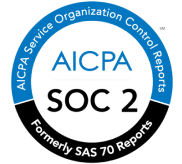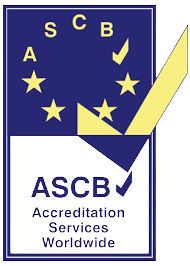Table of Content
- Introduction
- 4 Core Reasons Why Employees Leave
- The Role of HRMS Software
- 10 Smart Retention Solutions
- Retention Solution 1: Personalised Career Development Plans
- Retention Solution 2: Flexible Work Arrangements
- Retention Solution 3: Competitive Compensation Packages
- Retention Solution 4: Employee Recognition Programs
- Retention Solution 5: Real-Time Data Analysis
- Retention Solution 6: Social Intranet Platforms
- Retention Solution 7: Exit Interviews for Valuable Insights
- Retention Solution 8: Efficient Hiring Portals
- Retention Solution 9: Onboarding for Culture Fit
- Retention Solution 10: Continuous Feedback Mechanisms
- Conclusion
- FAQs
- Q1: How can HRMS software help with employee retention?
- Q2: What are the key reasons employees leave their jobs?
- Q3: How can organisations create personalised career development plans using HRMS software?
- Q4: Why is real-time data analysis crucial for employee retention?
- Q5: What steps can HRMS software take to improve work-life balance for employees?
Introduction
Employee turnover is a constant challenge faced by organisations, but the real question is: Why do employees leave in the first place? In today's competitive job market, retaining top talent is crucial. To tackle this issue, businesses are harnessing the power of HRMS software to gain insights and implement effective retention strategies. Let's explore the primary reasons behind employee departures and how HRMS software can help.
Want to skip the post?

4 Core Reasons Why Employees Leave
-
Lack of Career Growth
One common reason employees leave is the absence of opportunities for career advancement. When workers feel that their potential is not being recognized or that their growth is stunted, they are more likely to seek new opportunities elsewhere. HRMS software can address this by identifying high-potential employees and creating personalised career development plans.
Related: Employee Burnout: 7 Common Causes and 5 Smart Solutions
-
Poor Work-Life Balance
Unbearable work pressure makes one demotivated to stretch their lives and show up at work unnecessarily for long hours. This is also unproductive and unhealthy to an employee's mindset. Thus, end up leaving if they feel they have no recognition, value, or respect at work. It means their work-life balance is going for a toss, and they need to retune or realign their commitments and priorities. One such priority for them is to switch companies, seeking better culture and engagement opportunities.
Related: Balance Work Life For Remote Workers With 6 Tips
-
Inadequate Compensation
When employees believe that their efforts are not adequately rewarded, they may look for positions with better pay. Our HRMS software can assist in benchmarking compensation packages against industry standards to ensure competitiveness.
Related: Culture vs Compensation: How to Balance the Two?
-
Lack of Recognition
Feeling unappreciated is demotivating. Employees want to know that their contributions are valued. HRMS software can track performance metrics and facilitate employee recognition programs to boost morale and retain top talent.
Related: 7 Dos & Don'ts Of Employee Recognition Activities
The Role of HRMS Software
uKnowva HRMS plays a pivotal role in addressing these retention challenges. It provides real-time data analysis, allowing HR professionals to monitor employee satisfaction, performance, and engagement. Additionally, it enables HR teams to take a proactive approach to employee retention by identifying potential issues before they lead to departures.
10 Smart Retention Solutions
Retention Solution 1: Personalised Career Development Plans
uKnowva HR management software in India can identify high-potential employees and create customised career development plans that align with their aspirations and the company's needs. This not only fosters career growth but also demonstrates the organisation's commitment to its employees' success.
Related: 7 Impact of Training and Development
Retention Solution 2: Flexible Work Arrangements
Offering flexible work arrangements or flexible hours can improve work-life balance. HRMS software can help manage and track these arrangements, ensuring that they are implemented effectively.
Related: Why Do Employees Demand Remote Working Flexibility?
Retention Solution 3: Competitive Compensation Packages
HRMS software can benchmark compensation packages to compensate employees fairly for their contributions. This helps in retaining valuable talent who might otherwise seek higher-paying opportunities elsewhere.
Retention Solution 4: Employee Recognition Programs
Using HRMS software, organisations can establish and manage employee recognition programs. Regularly acknowledging employees' achievements and contributions can boost morale and loyalty.
Retention Solution 5: Real-Time Data Analysis
HRMS software provides real-time data analysis, allowing HR professionals to identify trends and potential retention issues as they emerge. This proactive approach is invaluable in preventing employee departures.
Related: Real-Time HR Data: Unlocking HR Analytics with HRMS
Retention Solution 6: Social Intranet Platforms
Creating a social intranet where employees can voice their opinions and ideas fosters a sense of belonging and engagement. HRMS software can help in setting up and managing these platforms.
Retention Solution 7: Exit Interviews for Valuable Insights
Exit interviews provide valid and verified reasons to know why employees leave. HRMS software can help in conducting and analysing these interviews, enabling organisations to make necessary improvements.
Retention Solution 8: Efficient Hiring Portals
By analysing data from HRMS software, HR teams can evaluate the efficiency of their hiring portals and make informed decisions about their recruitment strategies.
Retention Solution 9: Onboarding for Culture Fit
HRMS software can assist in identifying candidates who are the best culture fit for the organisation, ensuring that new hires are more likely to stay long-term.
Related: Effective Onboarding with HRMS
Retention Solution 10: Continuous Feedback Mechanisms
Establishing continuous feedback mechanisms through HRMS software allows employees to voice their concerns and suggestions, leading to a more responsive and engaging workplace.
Conclusion
Employee retention is a complex challenge that requires proactive solutions. HRMS software, with its real-time data analysis capabilities, empowers organisations to identify and address the root causes of employee turnover. By implementing the ten retention solutions outlined in this article, companies can create a workplace where employees are motivated, engaged, and less likely to leave.
FAQs
Q1: How can HRMS software help with employee retention?
HRMS software can help with employee retention by providing real-time data analysis that allows organisations to monitor employee satisfaction, performance, and engagement. It enables HR teams to identify potential issues and implement proactive retention strategies. Additionally, HRMS software can assist in creating personalised career development plans, tracking compensation packages, and managing employee recognition programs, all of which contribute to higher employee retention rates.
Q2: What are the key reasons employees leave their jobs?
Employees leave their jobs for various reasons, but some key factors include:
- Lack of career growth opportunities.
- Poor work-life balance.
- Inadequate compensation.
- Lack of recognition for their contributions.
Addressing these factors is crucial for improving employee retention.
Q3: How can organisations create personalised career development plans using HRMS software?
HRMS software can create personalised career development plans by identifying high-potential employees and aligning their career aspirations with the company's needs. It tracks employees' skills, goals, and progress, allowing HR professionals to tailor development plans that help employees advance within the organisation.
Q4: Why is real-time data analysis crucial for employee retention?
Real-time data analysis is crucial for employee retention because it allows organisations to identify retention issues as they emerge. With timely insights, HR teams can take proactive measures to address employee concerns and improve job satisfaction, ultimately reducing turnover rates.
Q5: What steps can HRMS software take to improve work-life balance for employees?
HRMS software can improve work-life balance by monitoring workload and managing flexible work arrangements. It can help employees have the option for remote work or flexible hours, allowing them to find a better balance in their professional and personal lives. This flexibility can contribute to higher job satisfaction and, in turn, improved employee retention.












